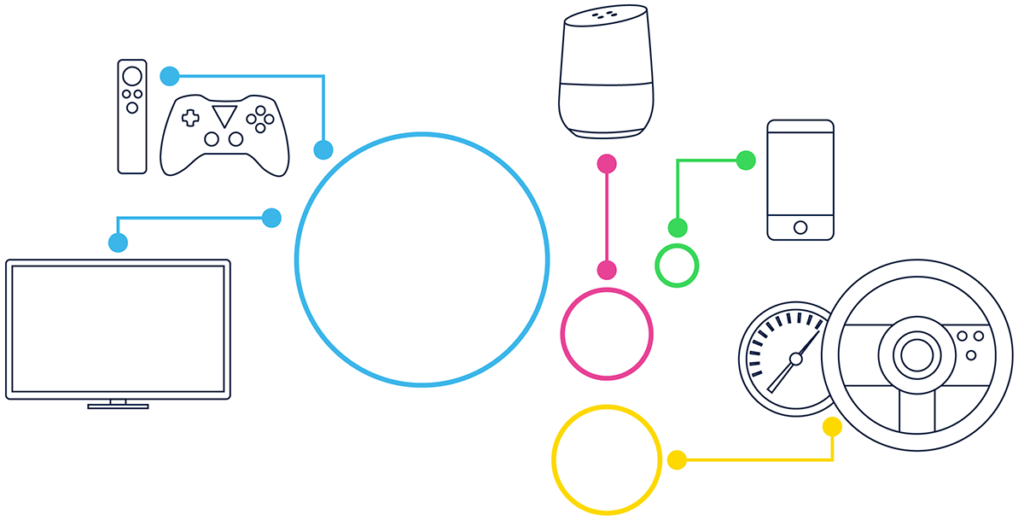Google Assistant is the voice assistant behind Google Home, Android-based smartphones, media consoles such as Nvidia Shield, a mobile app for iOS and more. It is the intermediary between the device and the content users want to access. Some people think of it as the browser for voice-enabled content. That is partially correct, but Google Assistant also includes intelligence and makes capabilities from third-party Google Actions available to users. Each Google Assistant-based system has three key components.

DEVICE // Can be any device with a microphone, speaker and connected to the internet. For example, the Google Home pictured here contains two microphones and an integrated high-excursion speaker, enabling it to capture and transmit voice communication and audio content. The most widely available device with voice assistant access is smartphones and others include smart TVs, IoT devices and cars.
GOOGLE ASSISTANT // The cloud-based voice assistant service that interprets speech, determines user intent and returns spoken results by converting text to speech in one of eight user-chosen voices. This is the software and voice behind Google Home, the Google Assistant app on Android and iOS smartphones and all other devices.
ACTIONS ON GOOGLE // This is how third-parties like brands, media companies and game makers create voice apps for Google Assistant. Each action gives Google Assistant additional capabilities so it can help users get what they want. In some ways, Actions are like mobile apps and in other ways they are more similar to web pages. Actions are what you build to engage consumers and enable the user experience.
One thing you will notice about Google Home is that there is no screen. The primary Google Action use case on Google Home is not just voice-first; it is voice-only. This requires a different mindset from building apps for mobile devices or web pages where you rely on visual, touch and click interfaces. However, this is changing rapidly. Google Assistant on mobile and televisions have multimodal interfaces, showing the text of your conversation or related images on the screen. In addition, smart displays, which are voice-interactive screens, are starting to ship from several device manufacturers. Combining voice user experience (UX) with visual UX is now a requirement of Google Actions.
XAPP has developed over 1,000 voice apps including Google Actions. We have also measured performance on millions of voice app sessions with end users. We know what works and what doesn’t. And, we have a detailed process for designing, prototyping, building, managing and monitoring Google Actions. If you would like assistance designing or developing your Google Action, click the button below to learn more.